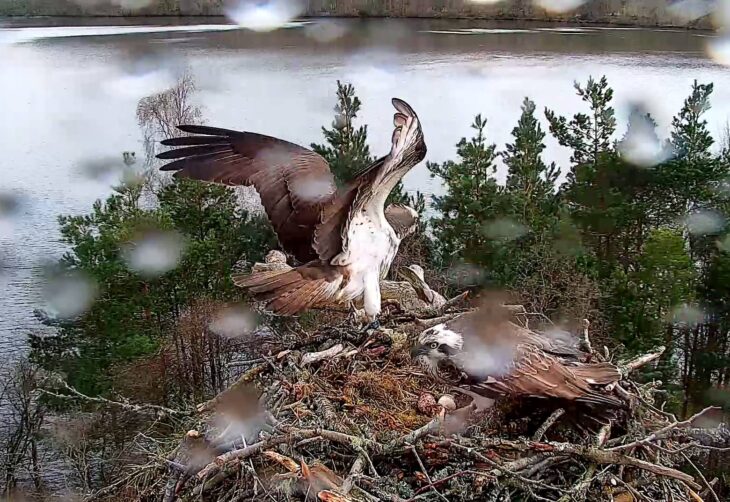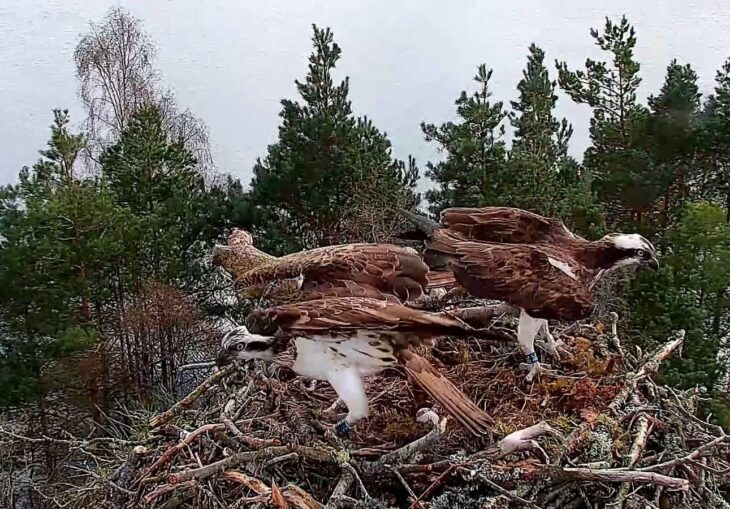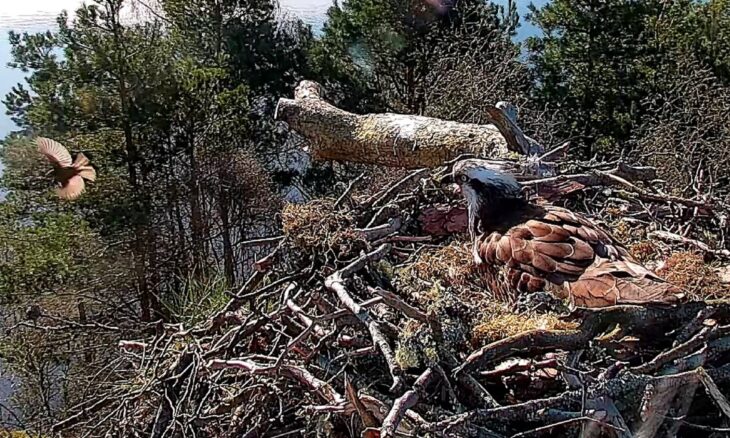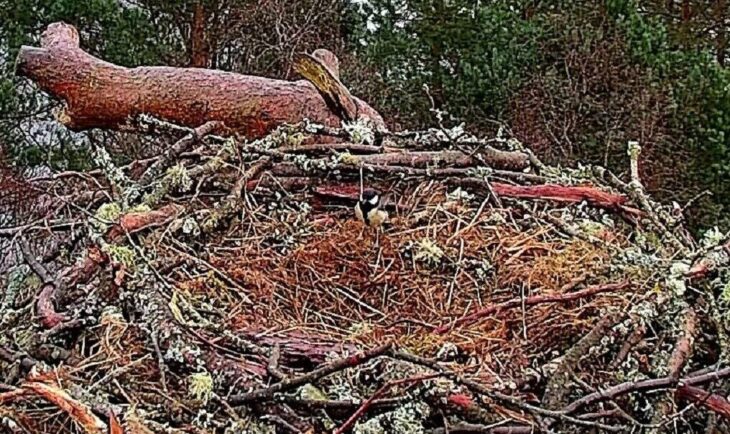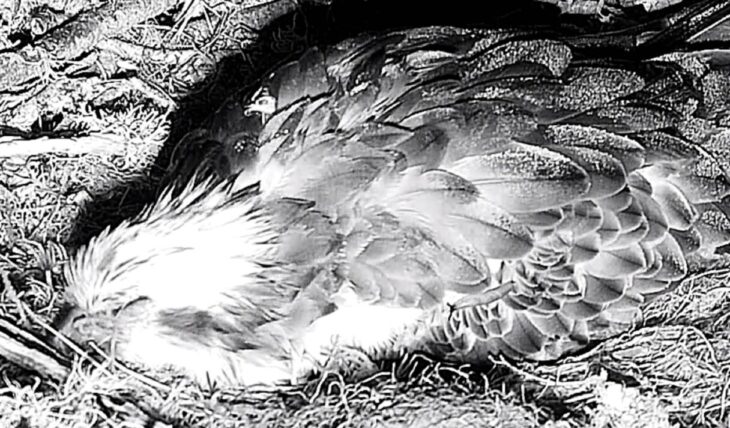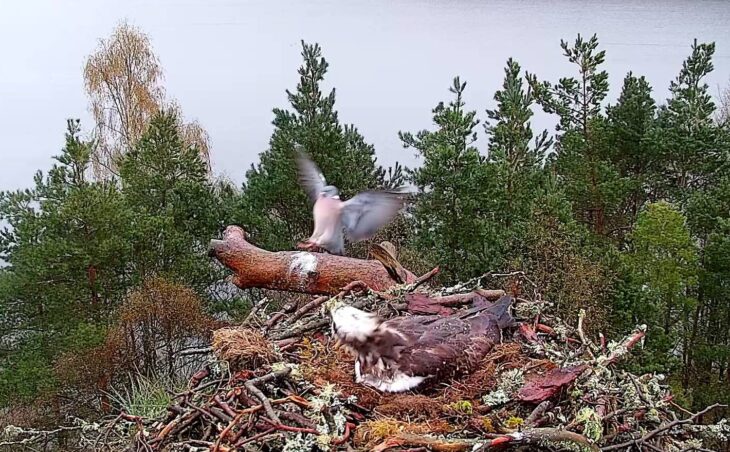Who’s Been On My Nest? A Closer Look at the Threats and Intrusions Faced by a Pair of Breeding Ospreys
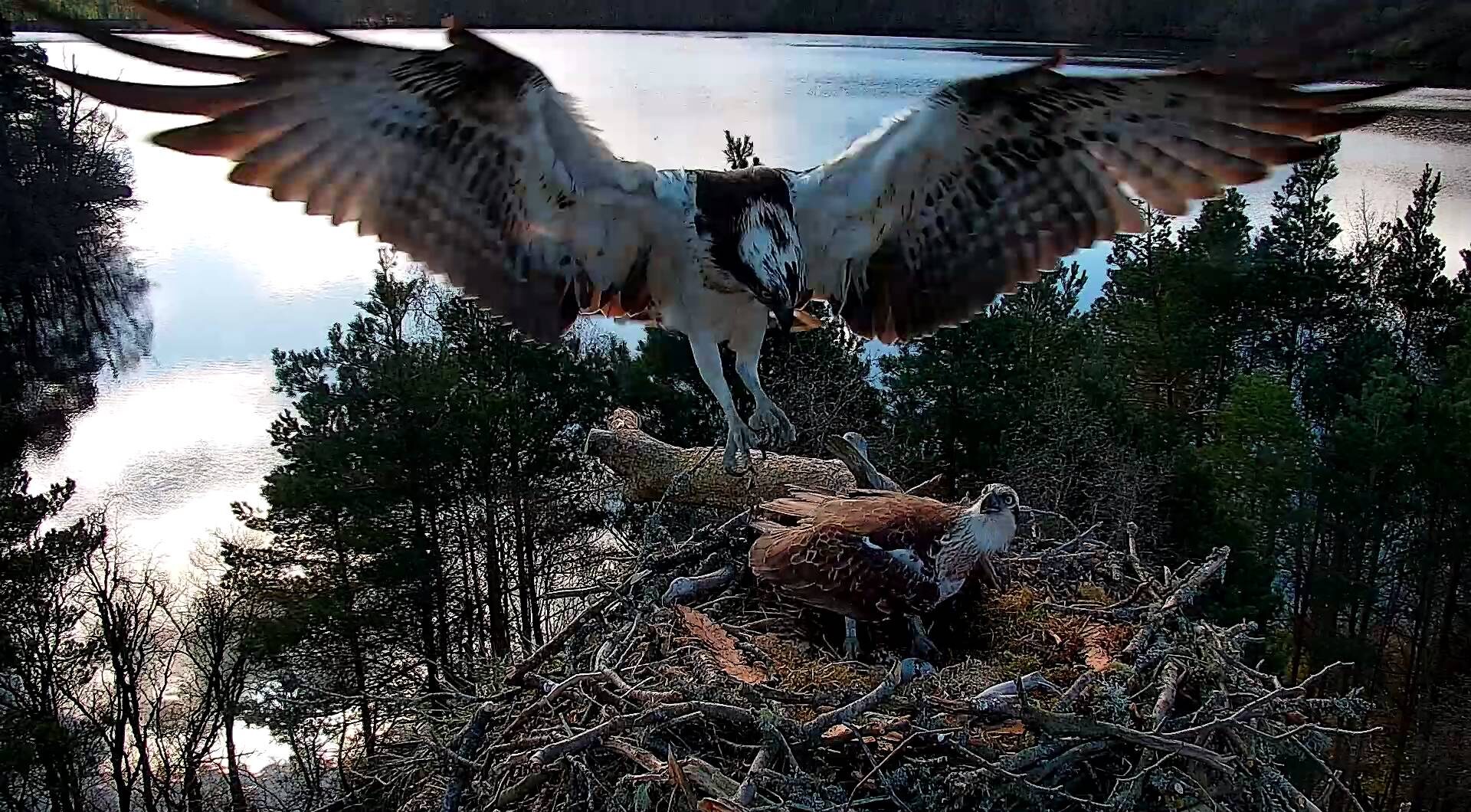
Like incubating or fishing, nest defence is one of the key tasks that ospreys must undertake to ensure the survival of their eggs, and later of their chicks. At the Loch of the Lowes, the pair of breeding ospreys can regularly be observed chasing avian intruders away from their nest. If you have been watching the live webcam lately, you may have seen that there are often several intruders in one day haranguing our female (NC0) and male (LM12). While they are quick to defend their territory against all potential threats, their responses can vary depending on the type of danger that they perceive. In the course of our monitoring, we have had the chance to closely observe how a pair of breeding ospreys reacts to different threats, both avian and human.
Corvids
Crows and ravens are a threat to breeding ospreys because they could predate the raptor’s eggs or young chicks if given the opportunity. This is one of the reasons that it is so important that the ospreys are disturbed as little as possible. An unguarded nest exposes the eggs or chicks not only to hypothermia but also to corvid predation. With that being the case, the ospreys are very quick to chase away any of these intruders that come near. And if you see one osprey leave the nest, it is usually not long before the other will swoop in to shield the exposed eggs. The efficiency of this communication has developed noticeably in the four years that LM12 and NC0 have been paired.
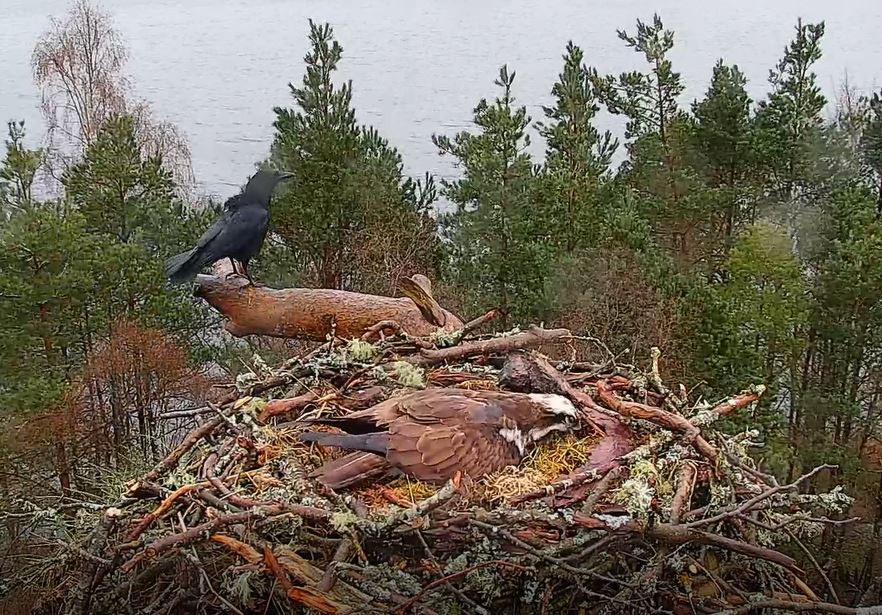
Ospreys
When Scottish ospreys leave their wintering grounds in West Africa or the south of Spain and Portugal, it is usual for the mature birds to depart well before the juveniles. Youngsters returning for the first time at about two years old will search for breeding sites of their own, and will look to exploit a weak pair of older ospreys, in the hope they can find a mate and take up residence on an existing nest, rather than build their own new one. Intruding incidents at Loch of the Lowes are often young ospreys, or older breeding birds without a territory, stopping by to check out the nest and see if they might be in with a chance of settling on there for the season.
In the first instance, the resident bird will usually give out a high pitched territorial ‘chipping’ alarm call and display a behaviour known as mantling, where they flatten themselves against the nest, partially extending their wings in order to shield the eggs and appear larger. This is one of the reasons that the females of raptor species are larger than the males. Since they are responsible for the majority of incubating, their greater bulk helps to protect the nest when they are exhibiting defensive behaviour.
Some osprey intruders will return year after year, and thanks to ringing endeavours, we are able to identify many repeat offenders. One of last years’ intruders for example, the eight year old Cumbrian male ‘Blue V4’, has been seen on the nest again this season and the Welsh female ‘Blue 8C’ was sighted both at Poole Harbour in Dorset on her migration north and at Lowes for the second year running. She is a nine year old bird originating from the Glaslyn ‘webcam’ nest and the repeated sightings of her at Lowes suggest that she might be breeding elsewhere in Perthshire.
While it is not uncommon for ospreys to live in closer quarters where the population density is higher, for instance in North America, or during the non-breeding season in Africa where wintering ospreys share territory and much smaller hunting grounds, the pair at Lowes has grown accustomed to having the reserve to themselves and any other ospreys that come into sight are quickly chased well away from the nest.
Herons
Herons, like ospreys, are attracted to the rich fishing grounds in and around Lowes; and, like ospreys, they choose to nest in elevated locations with clear views. This makes an osprey nest prime real estate to a heron – if it can oust the ospreys first that is. In addition, herons have been known to predate ospreys chicks and are also a competitor for the osprey’s one and only food source: fish. If a heron is sighted by one of the ospreys, the most common response is for one or both of them to give chase, hounding the intruding fisherman far into the distance, rather than remaining on the nest and mantling as they would do in response to an osprey intruder. Herons will often elicit an intense, throaty alarm call from an osprey, as NC0 is demonstrating in the clip below.
Humans
Arguably the most dangerous threat to ospreys are humans, since ospreys have not evolved to defend themselves or their young against humans as they have against other ospreys for example. In the event of a human threat, an incubating osprey will flush off the nest, often with only the briefest of warning calls, leaving its eggs exposed to both predation and the weather. Without the insulating warmth of the parent bird, eggs can chill and fail. The chicks too are vulnerable to the weather. Their down not being waterproof, they rely on the continued cover provided by their parents until their feathers develop. The video below illustrates typical osprey behaviour when disturbed by human activity.
Of course this list of intruders is by no means exhaustive. Goshawk are fearsome hunters who have been known on occasion to flush adult osprey from the nest and predate on young before they fledge, as was witnessed at Poole Harbour last season. Even buzzards, pigeons, wrens, warblers and many other feathered passers-by can from time to time elicit a response from NC0 or LM12 who maintain and defend a large territory even, it seems, against songbirds who contemplate searching the nest for some insects to snack on.
There’s sure to be much more intruding action over the season, especially as the number of youngsters returning to the country for the very first time increases throughout the month of May. Keep up to date with the daily lives of the ospreys by watching the live webcam and by following us on Twitter or Facebook for regular updates about them and the reserve’s many other inhabitants.
Anna Welch
Species Protection officer
Help protect Scotland’s wildlife
Our work to save Scotland’s wildlife is made possible thanks to the generosity of our members and supporters.
Join today from just £3 a month to help protect the species you love.
Preface
Like incubating or fishing, nest defence is one of the key tasks that ospreys must undertake to ensure the survival of their eggs, and later of their chicks. At the …

